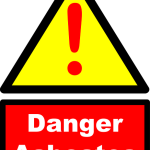Effective change management transforms uncertainty into opportunity. Understanding how to design and apply a clear strategy enables organisations to minimise resistance, align teams, and measure progress. This guide offers practical steps and insights to help you lead change confidently, ensuring smoother transitions and lasting success.
Developing a Robust Change Management Strategy
Creating an effective change management strategy begins with clear objectives that align with overall organizational goals. Peacock Hill Change Management Consulting emphasizes the importance of defining specific, measurable outcomes to ensure efforts are targeted and actionable. Establishing scope and purpose early on helps focus resources and set realistic expectations for stakeholders.
Topic to read : Discover luxurious hair and beauty services in ashford
Assessing organizational readiness is a key step. This involves evaluating current capacity, culture, and potential resistance points. Techniques like change readiness surveys or stakeholder analyses help identify areas needing additional support, enabling tailored strategies that improve acceptance. Understanding the company’s cultural fabric facilitates crafting approaches that resonate with employees, making transitions smoother.
Measurable success metrics are essential to monitor progress effectively. Setting Key Performance Indicators (KPIs) related to adoption rates, employee engagement, or operational improvements offers tangible benchmarks. Regular assessment using tools like dashboards or feedback loops provides real-time insights, allowing adjustments to keep initiatives on track.
In the same genre : Revitalize your home with expert carpet cleaning in orpington
Industry frameworks, such as the Prosci Methodology, support this structured process by integrating models like ADKAR® and the Change Triangle, promoting scalable and adaptive strategies. These frameworks help bridge the gap between individual behaviors and organizational outcomes, fostering sustained change.
In navigating complex transitions, stakeholder engagement and transparent communication are vital. Developing comprehensive communication plans specifying messages, channels, and timing ensures clarity and reduces ambiguity. This transparency builds trust, helping to manage resistance proactively and reinforce desired behaviors.
Long-term success hinges on continuous reinforcement and leadership involvement. Leaders must champion change, model behaviors, and sustain momentum through regular updates and recognition efforts. Equally important is equipping teams with necessary skills via targeted training programs, such as workshops or e-learning modules, aligned with the change objectives.
Peacock Hill Change Management Consulting offers expertise to tailor strategies that address unique organizational contexts. Visit their website for more details on designing successful change initiatives, including access to extensive tools and resources.
Foundations of Effective Change Management
Key Components of a Change Strategy
Change management planning drives successful organizational transformation methods by ensuring each phase of transition considers stakeholder perspectives. A robust stakeholder analysis in transformation projects pinpoints influential groups, allowing tailored stakeholder engagement plans that address individual concerns and motivations. Effective communication during transitions hinges on crafting communication frameworks for change that specify messaging cadence, roles, and optimal channels town halls, intranets, or direct management forums. This fosters trust while reducing resistance and the likelihood of misinformation. Integrating risk management in transitions means systematically assessing change impacts, mapping potential resistance, and implementing proactive mitigation tactics. Together, these layers streamline change initiative examples and help adapt best practices for change readiness across diverse scenarios.
Importance of Leadership and Sponsorship
Leadership roles in transitions stand as a cornerstone for organizational support. Change sponsorship best practices involve identifying and empowering visible change sponsors who actively champion the initiative. Leadership communication models especially during high-stakes or sensitive phases set the tone for widespread buy-in, fostering alignment with business goals and transformation efforts. A coalition of executive sponsorship roles and project sponsorship engagement strengthens employee involvement strategies, supports cultural change facilitation, and keeps momentum high in times of uncertainty. Coaching leadership through change and mobilizing transition management roles and responsibilities inspires confidence, encourages motivation techniques during change processes, and helps manage change fatigue.
Utilizing Frameworks and Models
Widely recognized sample frameworks for change implementation, like the ADKAR® Model, guide change adoption measurement techniques by emphasizing individual readiness steps: Awareness, Desire, Knowledge, Ability, and Reinforcement. Change management assessment tools such as the Change Triangle (PCT) provide a holistic lens for evaluating change impact at the organizational, leadership, and project levels. Adapting these models for project- or industry-specific contexts for example, tailoring strategies for healthcare organizations ensures relevance, scalability, and measurable benefits realization in change management. Integrating feedback loops into change plans and iterative learning leads to continuous improvement in change projects and higher sustained adoption rates, essential for long-term organizational resilience.
Step-by-Step Approach to Designing Change Strategies
Initiation and Evaluation
Precision in change management planning begins by evaluating change impact and organizational readiness. This process uses change management assessment tools to map which groups and processes are most affected. Leaders can then conduct targeted readiness surveys and stakeholder analysis in transformation projects, providing data on likely resistance and support levels. A careful evaluation helps surface obstacles early, allowing tailored approaches for overcoming barriers to organizational change.
Effective strategies for managing resistance to organizational change start with clear identification of root causes. Often, resistance emerges from anxiety, misinformation, or lack of involvement. Mapping out incentive structures and designing employee training for change supports smoother transitions. At this stage, developing stakeholder engagement plans and crafting communication frameworks for change ensures the right messages reach the right people at the right moments.
Evaluating change impact enables organizations to define impact groups precisely. Tools such as change readiness surveys, stakeholder communication matrices, and change management maturity models help quantify and qualify each group’s position and preparation. By collecting this intelligence upfront, the organization can tailor communication, training, and engagement plans to those most impacted minimizing operational disruption from the outset.
Planning and Execution
Success hinges on operationalizing organizational transformation methods with clarity. Effective planning brings together cross-functional change teams that represent diverse viewpoints and skill sets. These teams leverage best practices for change readiness, integrating process reengineering techniques and building a vision that aligns business goals with transformation.
Timelines and milestones for change initiatives are developed collaboratively, using scenario planning for change management to anticipate risks and address contingencies. Integration of reinforcement methods from structured motivation techniques during change processes to regular milestone celebrations in change projects helps ensure stakeholders remain engaged and momentum is retained.
Cross-functional teams deploy knowledge management in change projects, combining project management integration with change efforts. Regular leadership communication models and strategic communication channels during change serve to reinforce vision and direction. This helps embed required behavioral changes and supports change adoption measurement techniques that drive accountability at all levels.
Monitoring and Continuous Improvement
Ongoing monitoring is supported through quantitative metrics (such as adoption rates and process efficiencies) and qualitative feedback, including integrating feedback from surveys and employee feedback during transitions. This dual approach ensures robust measurement and the ability to pivot quickly to address emerging issues or gaps.
Adjusting strategies is underpinned by feedback mechanisms, continuous improvement in change projects, and regular check-ins through agile project iterations for change. Celebrating incremental wins through motivation techniques during change processes sustains morale and demonstrates the value of new ways of working, reinforcing positive change adoption.
Data-driven evaluation leverages change management assessment tools and change adoption measurement techniques to track progress and inform ongoing adjustments. This approach ensures that organizational behavior and change remain aligned, maximizing the return on investment and anchoring transformation in everyday practice.
Careful attention to each of these steps, from stakeholder analysis in transformation projects to continuous improvement in change projects, allows organizations to apply sample frameworks for change implementation and achieve measurable, lasting results.
Tools, Templates, and Resources for Change Practitioners
Readiness Surveys and Gap Analyses
Change management assessment tools are the cornerstone of effective organizational transformation methods. Readiness surveys give a precise quantified measurement of current attitudes, skills, and obstacles by evaluating baseline conditions before any change management planning begins. Such surveys commonly ask employees about their understanding of upcoming projects and their perceived support from leadership roles in transitions, which helps anticipate pockets of resistance and flag knowledge gaps.
A gap analysis then measures progress by comparing these baselines to post-implementation answers. This approach highlights where managing resistance to organizational change should be the immediate focus, and which areas might require more intensive employee involvement strategies. Integrating feedback from surveys throughout the transition ensures course corrections are made efficiently, bolstering both stakeholder engagement plans and continuous improvement in change projects.
Communication Plan Templates
Proper planning is essential for effective communication during transitions. Practitioners rely on communication strategy templates and stakeholder communication matrix frameworks to systematize who receives what information and when. These templates lay out sample messages, assign responsible messengers, and detail timelines and milestones for change initiatives. Clarity in communication reduces uncertainty, which is a substantial driver of resistance management frameworks and helps align business goals with transformation progress.
A robust communication plan also defines which strategic communication channels during change (e.g., digital tools for transformation, live town halls) fit for particular audiences. By tailoring messaging, organizations can enhance leadership communication models, facilitate storytelling as a change tool, and maintain trust throughout the process.
Reinforcement and Reintegration Plans
Sustaining change momentum and managing change fatigue relies on structured reinforcement and reintegration plans. Practitioners track progress with checklists, monitor key milestones, and gather employee feedback during transitions via structured feedback mechanisms. These forms support post-implementation review processes and enable adaptive leadership in change by spotlighting successes and identifying lingering issues that might threaten adoption.
Celebration checklists provide guidance on how to recognize achievements these milestone celebrations in change projects boost morale and reinforce new behaviors. Feedback loops from these celebrations and regular check-ins encourage alignment of HR practices with organizational changes and highlight where further cultural change facilitation or leadership coaching is required. Ensuring continuous learning in change management, these resources make it possible to measure benefits realization in change management and maintain organizational resilience building over the long term.











